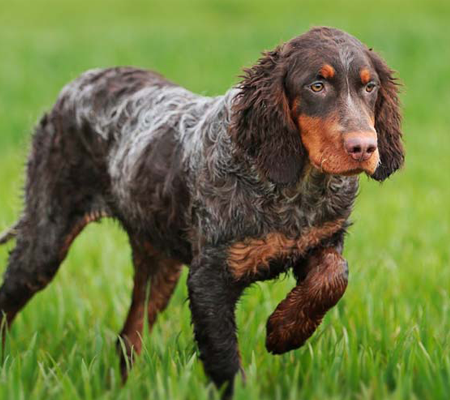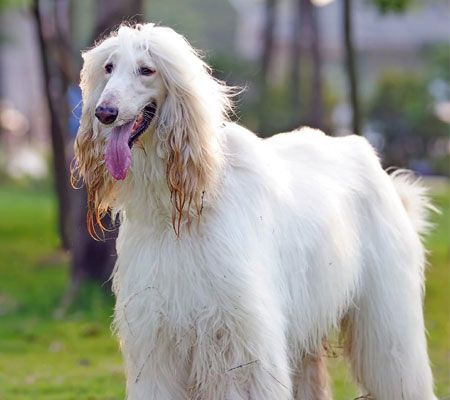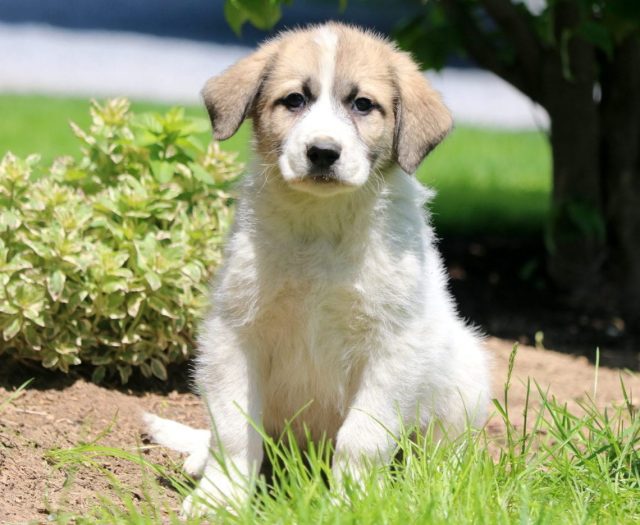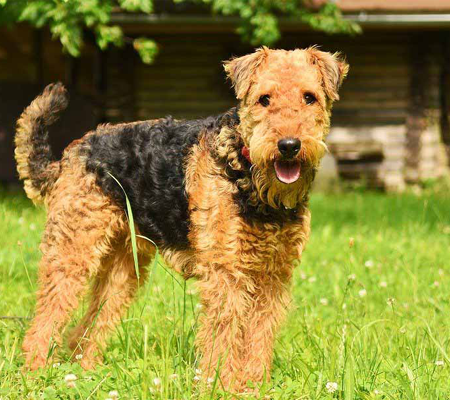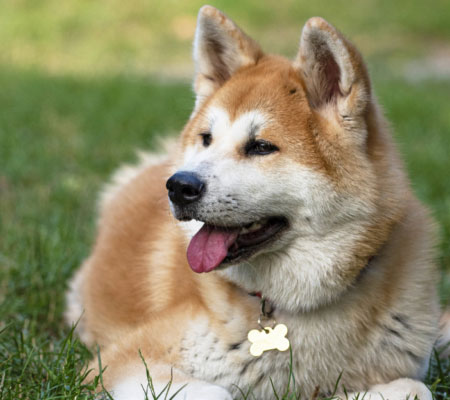Despite being bred for his excellent retrieving
sense and love of water, the Blue Picardy Spaniel is gaining popularity among
those who choose friendship above hunting skill. That's owed to his stunning
looks — that gorgeous bluish-gray coat with black spots — and warm nature, as
well as his willingness to sit on the couch when he's not out hunting or
swimming.
Don't overlook the Blue Picardy's need for activity,
even if he's a calm dog with an off button. To burn off his energy, he needs
regular physical and mental activities. Then he could be ready to crash on the
couch with you.
Although hunting is the breed's first passion, the
breed's high level of energy and retrieving and scenting abilities make healthy
Blue Picardy Spaniels ideal for dog sports such as agility, flyball, nose work,
and tracking. He may also make a good trekking buddy for those who enjoy being
outside. This high-energy canine thrives when paired with a human who is just
as energetic.
Blue Picardies are often loving and lively, and with
proper socialisation and care, they may be a child's closest friend. They may
also get along with other dogs and cats. Birds may prefer to maintain a safe
distance.
Blue Picardy Spaniel Highlights
Breed Size
Medium
Nature
Gentle, Friendly, Playful, Outgoing, Willful
Energy Level
Active
Intelligence
High
Barking Level
Frequent
Coat Length
Short
Breed Group
Gundog
Droll Amount
Low
Good with
Familes, Children, Dog
Feed Level
Medium, High
Colour Type
Speckled grey black forming a bluish shade, with some black patches.
Other Facts
Very intelligent, loyal for their owners, easy to train, better loyality.
Dog History
The original happy hunting grounds for a species of
black-and-white spaniel that was popular as a gun dog were the marshes of the
Somme River in France. This breed was most likely descended from a cross
between French Spaniels and English Setters. The black-and-white coat is
supposed to have originated from that cross.
The Blue Picardy Spaniel, as the dogs were known,
was given a breed standard by French sportsmen in 1938. World War II, however,
put an end to the breed's growth only a few years later. By 1960, the dogs were
on the verge of extinction. Despite the efforts of a few breeders to conserve
them, the dogs were barely recognised outside of northern France's hunting
community.In the mid-1990s, things began to change. The Blues eventually
outnumbered their formerly more popular cousins, the brown, white, and tan
Picardy Spaniels, in 2003.
Blue Picardies are no longer in danger of
extinction, despite their lack of popularity. They are becoming well-known as
both companion dogs and superb hunters, and are found not just in France but also
in Canada, the Netherlands, and California.
The Blue Picardy was recognised by the Canadian
Kennel Club in 1995, and the United Kennel Club in 1996. The American Rare
Breed Association has also registered the dogs.
22-27 inch 18-25 kg 13-15 year
Height

Weight

Life Span
Health and Care
All dogs, like all people, are susceptible to
inherited health issues. Run, don't walk, away from any breeder who doesn't
give a health guarantee on her puppies, who claims that the breed is completely
healthy and has no known issues, or who claims that her babies are kept
separate from the rest of the family for health reasons. A professional breeder
will be forthright and honest about the breed's health issues and the frequency
with which they arise in her lines.
- Hip dysplasia and eye illnesses such as ectropion
are among the breed's potential health issues (where the eyelid turns away from
the eyeball). A good breeder will get health certificates for his or her
animals.
- Inquire with the breeder about any additional issues
in her lines. Epilepsy or autoimmune thyroiditis, for example, may not manifest
until a dog is older.
- Orthopedic Foundation for Animals (OFA)
- PennHIP evaluation
Care
Despite the fact that careful breeders test their
breeding dogs for genetic illness and breed only the healthiest and best-looking
specimens, Mother Nature has other ideas and a puppy acquires one of these
disorders despite appropriate breeding techniques. Because to advancements in
veterinary treatment, the dogs can still have happy lives in many
circumstances. Ask the breeder about the ages of the dogs in her lines and what
caused their deaths if you're purchasing a puppy.
If a breeder claims that she doesn't need to
undertake those tests or that her dogs don't need health certificates because
her lines have never had issues, that her dogs have been vet-checked, or that
she has other justifications for skimping on genetic testing, walk away
immediately.
Ear infections are a potential non-genetic condition
to be aware of, so keep the Blue Picardy's ears clean and dry.
Remember that once you've brought your new puppy
home, you have the authority to safeguard him against a frequent canine health
issue: obesity. One of the simplest methods to help ensure a healthier dog for
life is to keep a Blue Picardy at an acceptable weight.
Dog Breed Care Tips and Important
Instructions
The Blue Picardy is a wonderful choice for
experienced and involved owners who have the time and resources to care for a
high-energy dog breed. The Blue Picardy is not well-suited to apartment living
since they demand a lot of space to run around and play. Aside from that,
caring for this breed shouldn't be too tough.
To keep the coat smooth and healthy, the Blue
Picardy should be brushed once or twice a week. It may need to be brushed as
much as once a day during the spring and fall shedding seasons. Professional
grooming is not required, although the hair around the pads and toes should be
cut on a regular basis.
Another crucial component of its maintenance is to
cut its toenails on a regular basis to keep them from splitting or clicking on
the floor. Brushing the teeth with a dog-specific toothpaste help maintain the
teeth and gums in good shape. Finally, it's a good idea to check your ears for
symptoms of infection or wax accumulation on a frequent basis. To keep the ears
clean, all you need is a cotton swab and some cleaning solution.
The Blue Picardy is a breed with a lot of energy,
stamina, and courage. It will almost certainly need at least an hour of daily
activity. This breed has a strong drive to run and swim at a high level. It
also performs well in retrieving, agility competitions, and obedience trials.
Feeding
Because the Blue Picardy Spaniel is a medium-sized
dog, you should feed it a high-quality dog food designed for its size. It's
also worth remembering that this is a high-energy hunting breed, so an
energetic, working breed or a high-performance mix could be a better fit.
Follow the feeding instructions on the box for your dog's weight, and make any
necessary modifications based on your dog's activity level.
Fun Facts
- The Blue Picardy Spaniel's official genuine language
is French, and their French name is Epagnuel Bleu de Picardie.
- The American Kennel Club does not recognise them.
They are, however, registered with the United Kennel Club, the Canadian Kennel
Club, and the Federation Cynologique Internationale, an international European
registry.
- Puppies of the Blue Picardy Spaniel are born with
light grey coats that deepen as they get older.
- The Blue Picardy Spaniel is a medium to big dog that
stands at or just under two feet tall and weighs between 45 and 60 pounds.
While the FCI standards do not mention a weight range, they are commonly
between 45 and 60 pounds.
- Long, muscular legs and well-furnished, round, but
never flat feet characterise this breed. Their nearly round eyes are typically
dark in colour and very expressive, and their ears are set fairly high on the
head and hang down to the sides, with leathers that are long enough to reach
the tip of the dog's nose when pulled forwards.
- They have a fairly wide head with a muzzle that is
both long and broad with a fairly pendulous lip, and their nearly round eyes
are typically dark in colour and very expressive.
- The ticking blue and grey colouring, which is often
accompanied by big black or dark blue patches, distinguishes this breed from
the original Picardy Spaniel.
Home Training Tips and General Information
- Having a dog entails a great deal of responsibility.
Canines demand a secure environment as well as a well-balanced food. They must
be treated by a veterinarian. They also require a good exercise, a lot of
enthusiasm, and a lot of training.
- It's hardly unexpected that, in addition to being
easy to care for, many people desire a dog that can rapidly pick up new skills
(or learn to alleviate himself outside).
- Although all companion dogs may be trained, some are
easier to teach than others. Because all dogs are humans, this list is a broad
generalisation of which breeds are typically reasonably easy to educate in
basic obedience and house manners.
- These might also help you if you're looking for a
sort that's straightforward to train for sophisticated as well as competitive
obedience! If not, you'll get a polite pet that may or may not know a few
graceful tricks!
- These dogs have a strong desire to work in close
collaboration with their owners.
- They are determined, intelligent, and ready to
please.
- You can train these dogs to perform almost anything
if you have time and determination.
- They excel at nosework, dock jumping, agility, and
other canine sports in addition to hunting!
FAQS
|
Is it true that Blue Picardy Spaniels shed? |
|
With profuse feathering on the ears, legs, chest, belly, and tail, the
Blue Picardy has thick, medium-length hair that is flat and straight or
somewhat wavy. The hair on her head is fine and short. He sheds throughout
the spring and summer, and he may shed gently throughout the year. |
|
What is the total number of Picardy Spaniels? |
|
Picardy Spaniels are still produced in the traditional manner, with
hunters producing a litter or two every couple of years from their particular
hunting partners. Picardy Spaniels have a global population of only
approximately 1000 individuals. |
|
What is the cost of a Blue Picardy spaniel? |
|
A Blue Picardy Spaniel puppy can cost anywhere from $900 to $1,200,
depending on the breed. The fact that they are rather scarce explains their
high price. In the United States, there is just one known breeder; however,
they are more prevalent in Canada and Europe. |
|
What does the word Picardy mean? |
|
A region in northern France: Mostly low-lying; significant combat
took place here during World War II. Picardie is the French name for the
region (pikardi) |
|
Where Picardy is located in France? |
|
Picardy, often known as French Picardie, is a historical area and former
French region. It included the northern départements of Oise, Somme, and
Aisne as a region. |
|
When was Picardy established? |
|
The Musée de Picardie was one of the earliest purpose-built museums in
France, and it is now one of the greatest regional museums in France. It was
founded in the 1850s. The museum's holdings and exhibits include a wide range
of topics, from Amiens' antiquity to nineteenth-century painting and sculpture. |
Blue Picardy Spaniel Unique Name
| Male Name | Female Name |
|---|---|
| Casper | Ashley |
| Chico | Basil |
| Dante | Chloe |
| Gus | Delia |
| Harvey | Duchess |
| Judge | Gia |
| Maximus | Goldie |
| Moe | Greta |
| Otto | Inez |
| Radar | Jasmine |
| Riley | Josie |
| Sam | Kali |
| Tesla | Karma |
| Oscar | Lizzy |
| Banjo | Pepper |
| T-bird | Brit |
| Whiz | Chiquita |
| Wiggles | Keesha |
| Xena | Kyra |
| Yeller | Nova |

